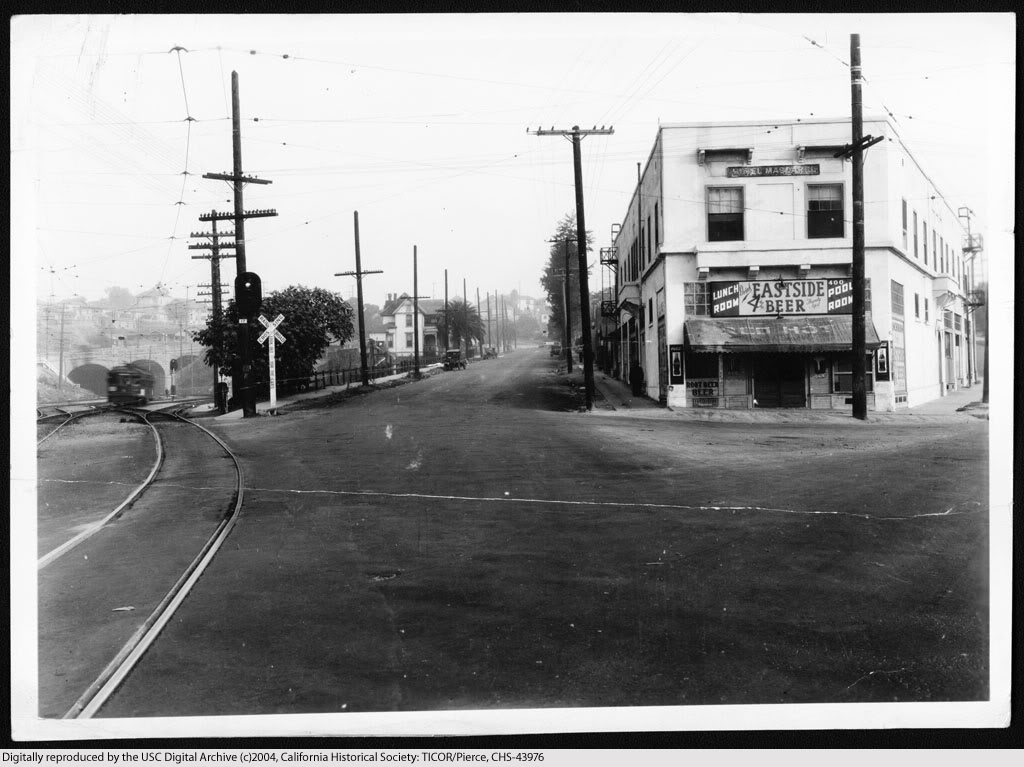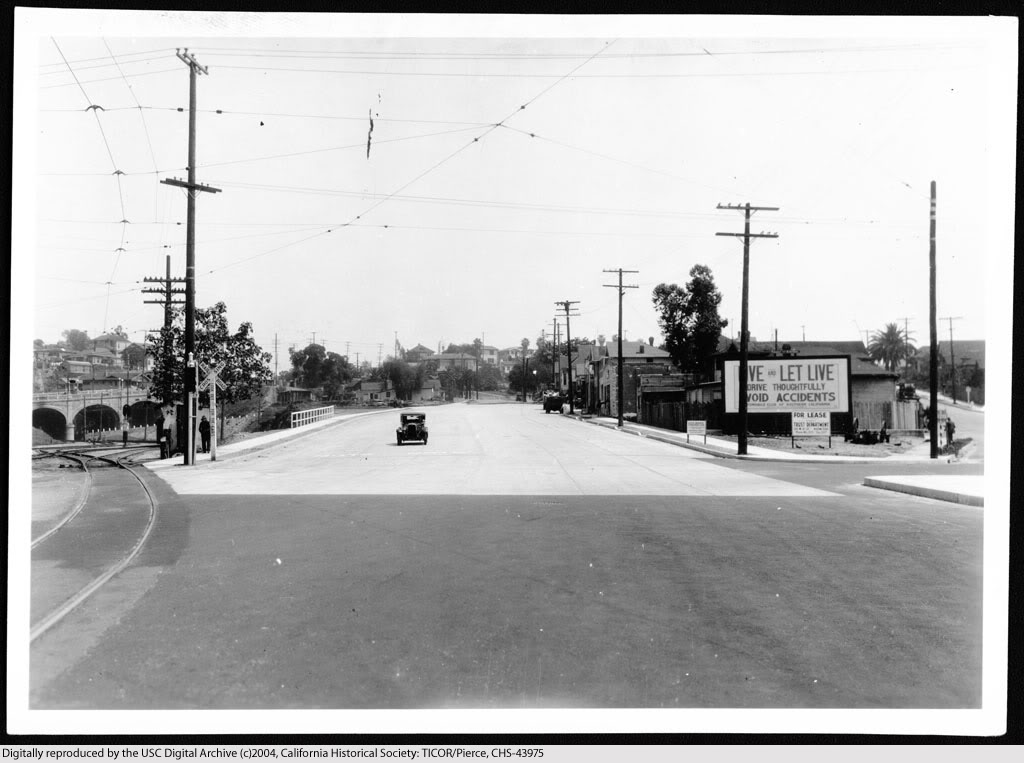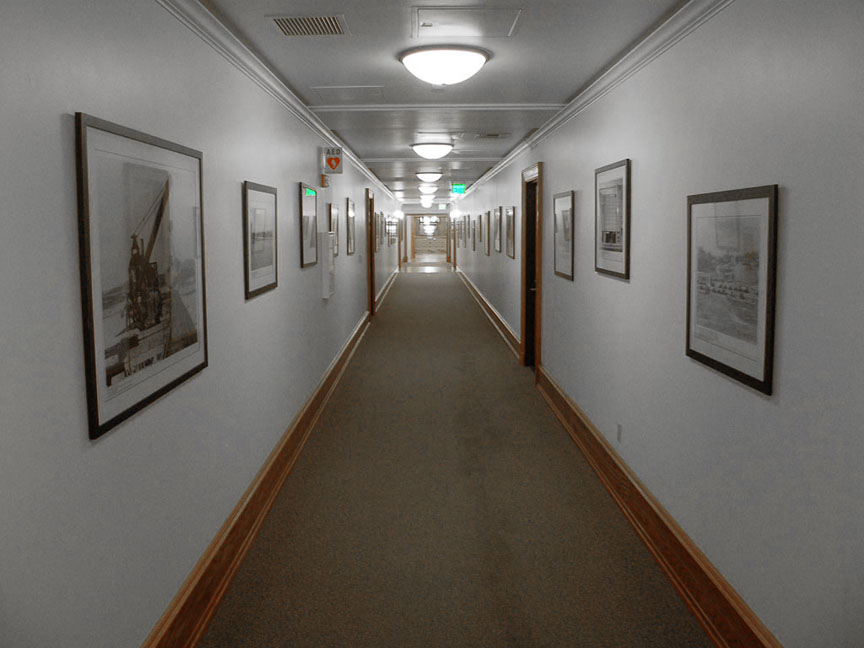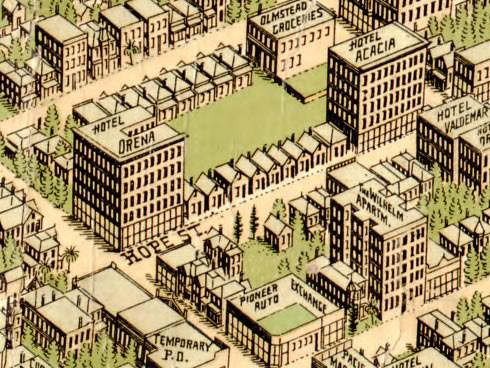Recall the image from my
last post, which was taken from the roof of the then-new Hotel Lankershim. Now, turn 90 degrees to your right, and this is what you would see. It's South Broadway, looking north from Seventh Street, in winter 1905-'06 :

Source: USC Digital Library.
A pleasing vista of the old city, isn't it? There are familiar landmarks like the pyramid-topped tower of City Hall up the street, with the Los Angeles County Court House on the hill in the background. At right is the tallest structure in town: The Braly Building, or the Union Trust Building as it was called at that particular time.
I have to laugh at the sign on the also-new Hotel Alexandria at center right. "THIS FIRE PROOF HOTEL
IS ABSOLUTELY FIRE PROOF." Sounds like a paraphrasing of a familiar internet meme.
;)Pop quiz! How could I date this photo so precisely to 1906? Hint: it has to do with the conspicuous absence of two formerly-prominent (and pre-eminent) buildings at the left of this picture. If you know which buildings I'm talking about, then you know it's 1906, too! As far as it being winter – that's a very wintry view of the San Gabriel Mountains there. Looks like it does after a cold front's passed through, if my recollection of the area's seasonal weather features is correct.
As nice as this image is, I've saved the best for last. The next view I'll share with you will take your breath away, I guarantee!















































